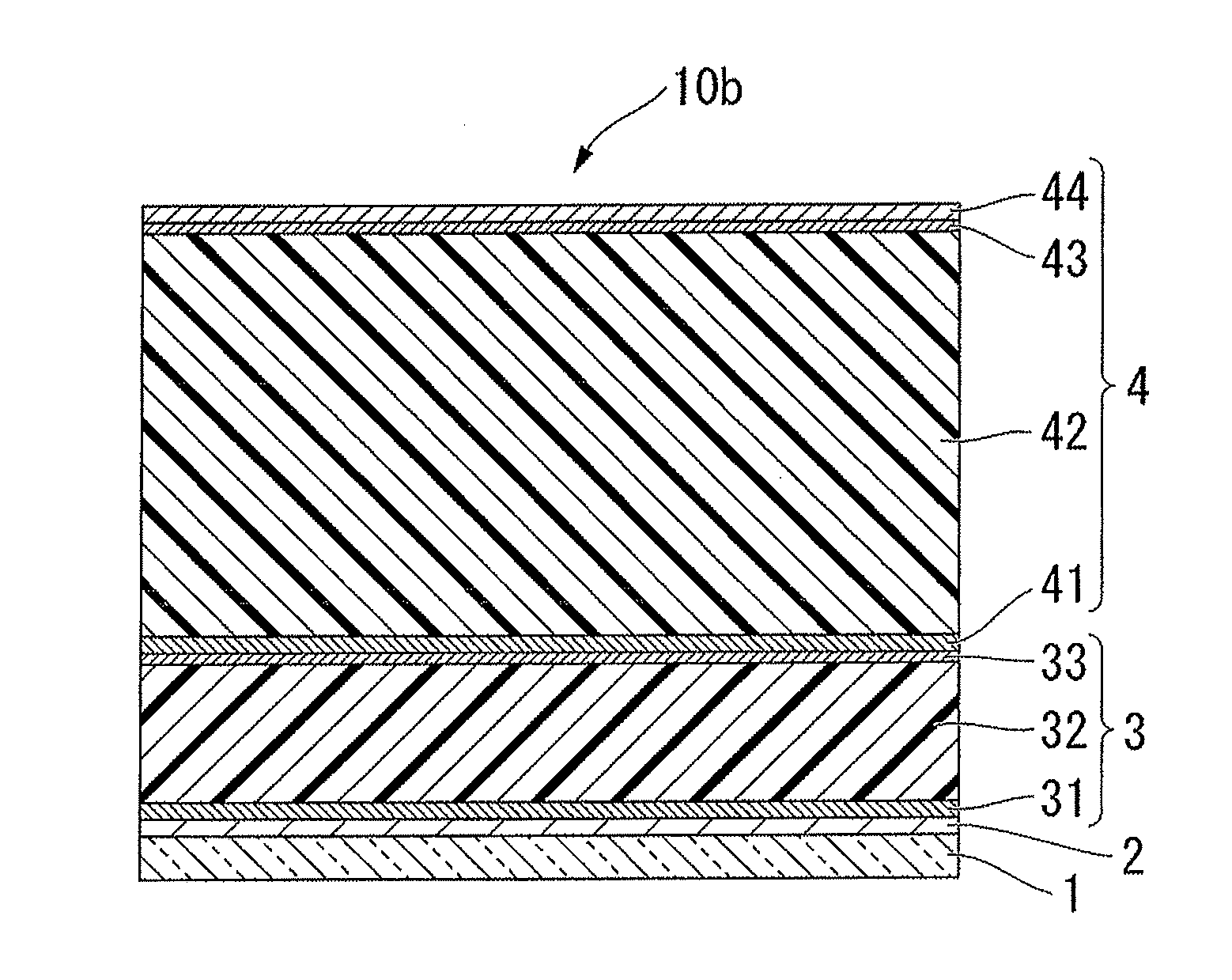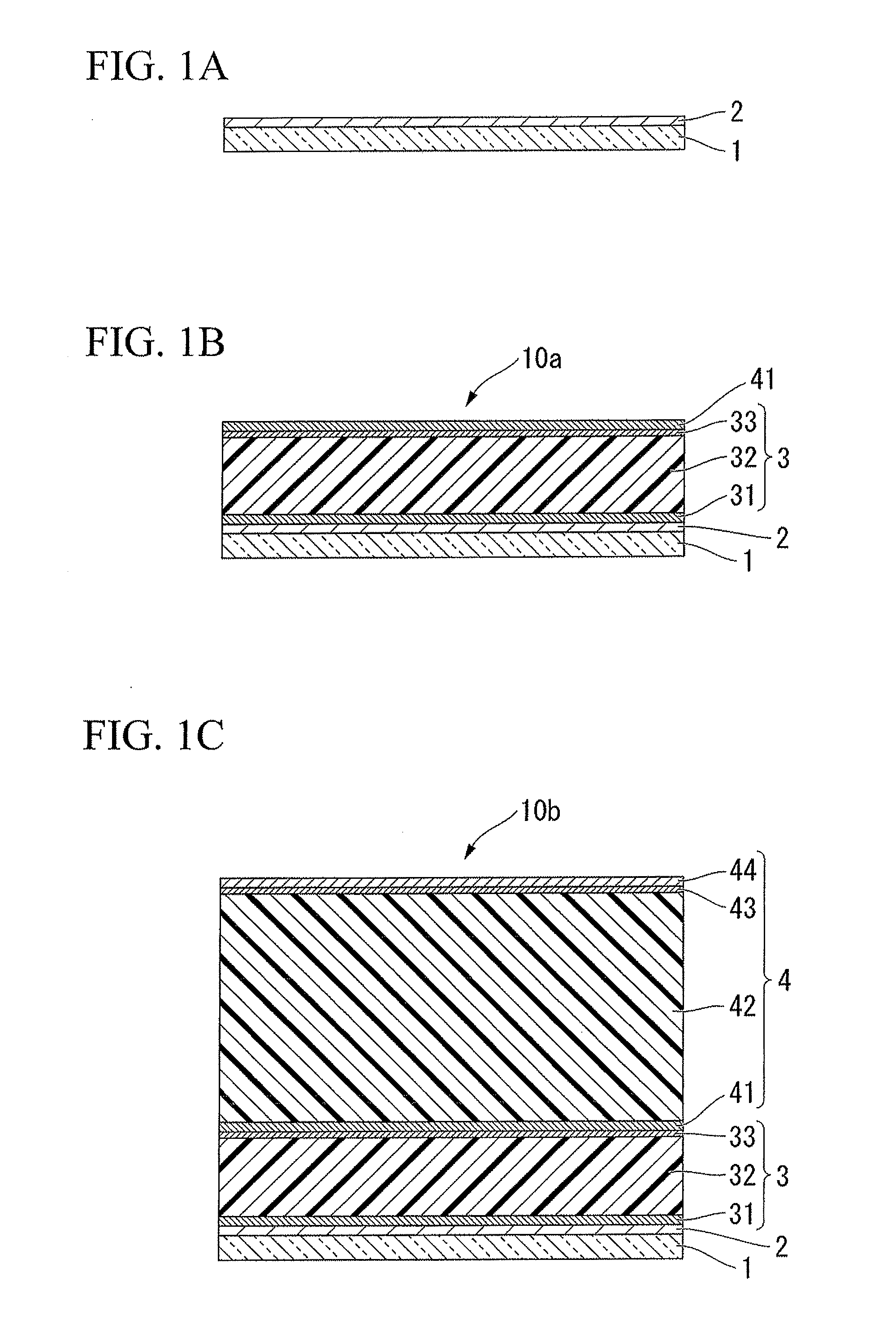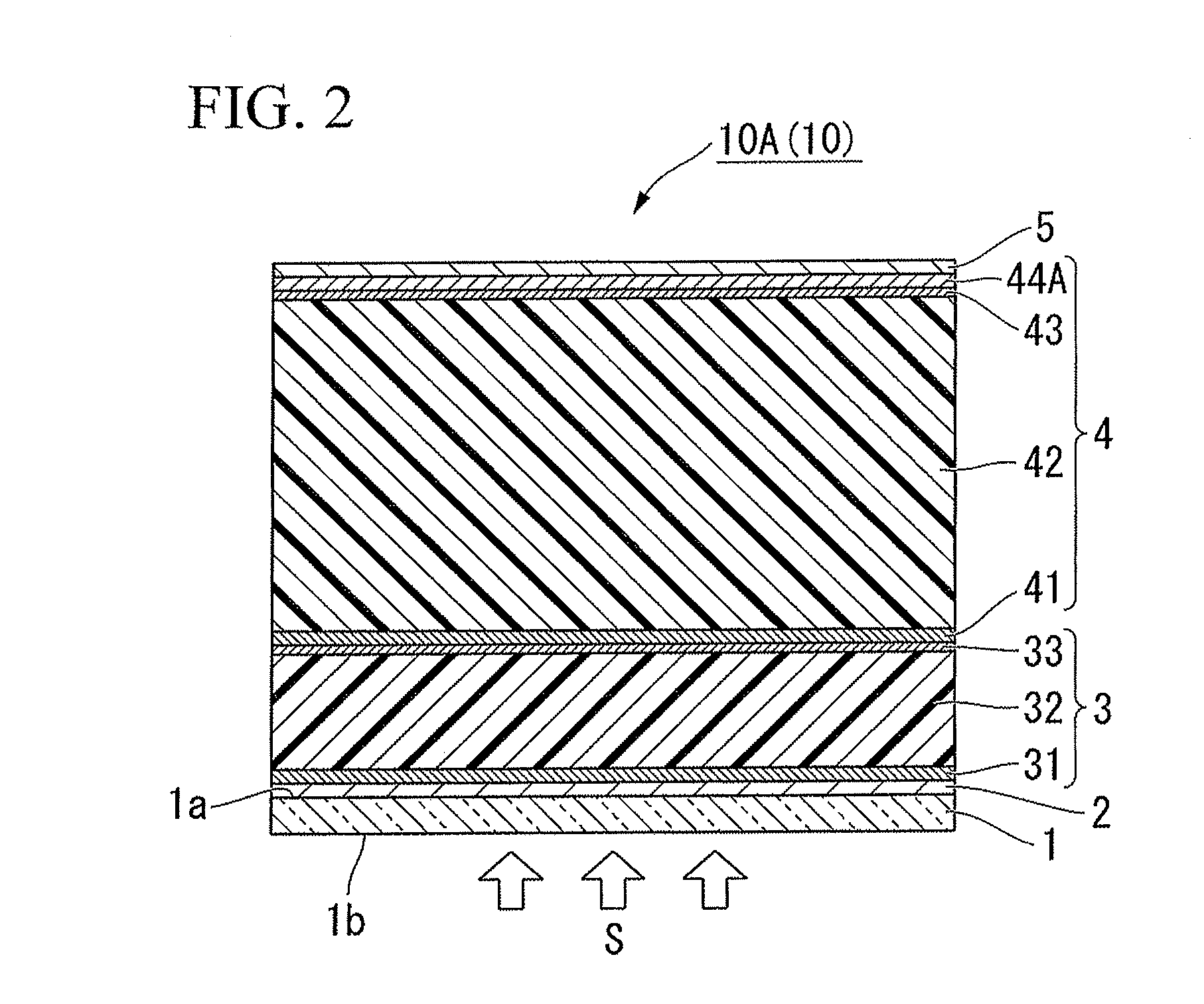Photoelectric conversion device manufacturing method, photoelectric conversion device, photoelectric conversion device manufacturing system, and method for using photoelectric conversion device manufacturing system
- Summary
- Abstract
- Description
- Claims
- Application Information
AI Technical Summary
Benefits of technology
Problems solved by technology
Method used
Image
Examples
first embodiment
[0140]FIGS. 1A to 1C are cross-sectional views illustrating a photoelectric conversion device manufacturing method of the invention.
[0141]FIG. 2 is a cross-sectional view showing the layer structure of a photoelectric conversion device manufactured by the invention.
[0142]Firstly, as shown in FIG. 2, in the photoelectric conversion device 10A (10) manufactured by the manufacturing method of the invention, a first photoelectric conversion unit 3 and a second photoelectric conversion unit 4 are formed on a first face 1a (top face) of a substrate 1 in this order and stacked in layers.
[0143]Furthermore, a back-face electrode 5 is formed above the second photoelectric conversion unit 4.
[0144]Each of the first photoelectric conversion unit 3 and the second photoelectric conversion unit 4 includes a pin-type layer structure.
[0145]The substrate 1 is a substrate having optical transparency and insulation property and is composed of an insulation material having an excellent sunlight transpare...
second embodiment
[0311]Next, a second embodiment of the invention will be described.
[0312]In addition, in the explanation described below, identical symbols are used for the elements which are identical to those of the first embodiment, and the explanations thereof are omitted or simplified.
[0313]In the second embodiment, a constitution or a method which are different from the above-described first embodiment will be mainly described.
[0314]FIG. 4 is a cross-sectional view showing the layer structure of a photoelectric conversion device manufactured by a manufacturing method of a second embodiment.
[0315]In the second photoelectric conversion unit 4 of the photoelectric conversion device 10B (10), a p-type semiconductor layer 44B including oxygen (p-layer, third p-type semiconductor layer) is formed on the n-type semiconductor layer 43 (n-layer).
[0316]The p-layer 44B including oxygen is formed in the same reaction chamber as the reaction chamber in which the i-layer 42 and the n-layer 43 constituting ...
example 1
[0350]The photoelectric conversion device manufacturing method of Example 1 will be described.
[0351]A p-layer composed of an amorphous-silicon based thin film, a buffer layer, an i-layer composed of an amorphous-silicon based thin film, an n-layer including microcrystalline silicon, which constitute a first photoelectric conversion unit, and a p-layer including microcrystalline silicon and constituting the second photoelectric conversion unit were sequentially formed on a substrate.
[0352]In the method for forming the above layers, a plurality of plasma CVD reaction chambers which are connected in line were used, one layer was formed in one plasma CVD reaction chamber using a plasma CVD method, and a plurality of layers were formed by carrying out a step of transferring a substrate and a step of forming a film on the substrate in order.
[0353]Subsequently, the p-layer constituting the second photoelectric conversion unit was subjected to an air atmosphere, and an OH radical included p...
PUM
| Property | Measurement | Unit |
|---|---|---|
| Length | aaaaa | aaaaa |
| Electrical conductivity | aaaaa | aaaaa |
| Transparency | aaaaa | aaaaa |
Abstract
Description
Claims
Application Information
 Login to View More
Login to View More - R&D
- Intellectual Property
- Life Sciences
- Materials
- Tech Scout
- Unparalleled Data Quality
- Higher Quality Content
- 60% Fewer Hallucinations
Browse by: Latest US Patents, China's latest patents, Technical Efficacy Thesaurus, Application Domain, Technology Topic, Popular Technical Reports.
© 2025 PatSnap. All rights reserved.Legal|Privacy policy|Modern Slavery Act Transparency Statement|Sitemap|About US| Contact US: help@patsnap.com



